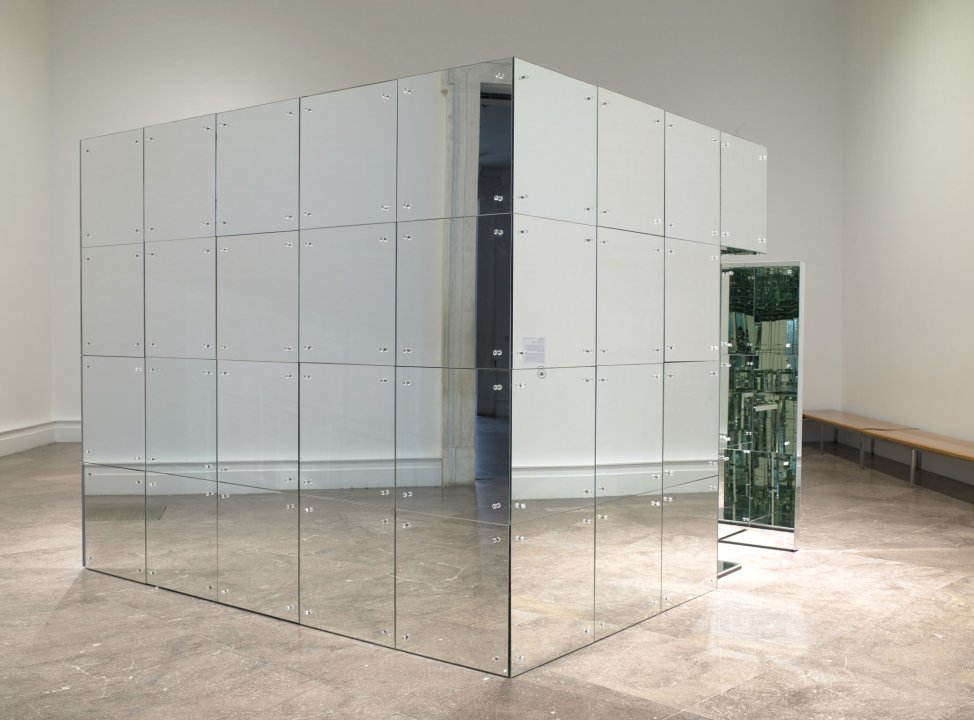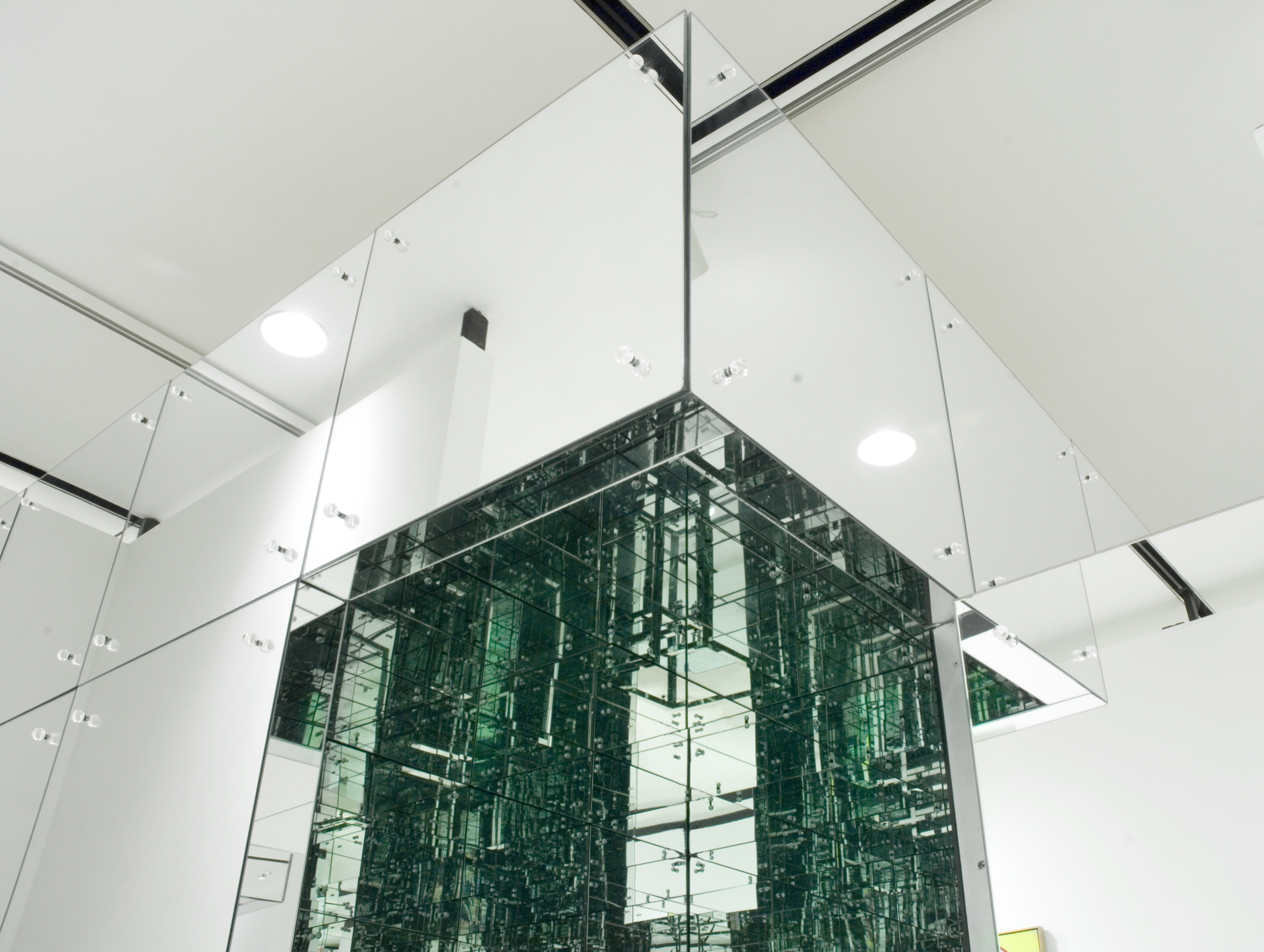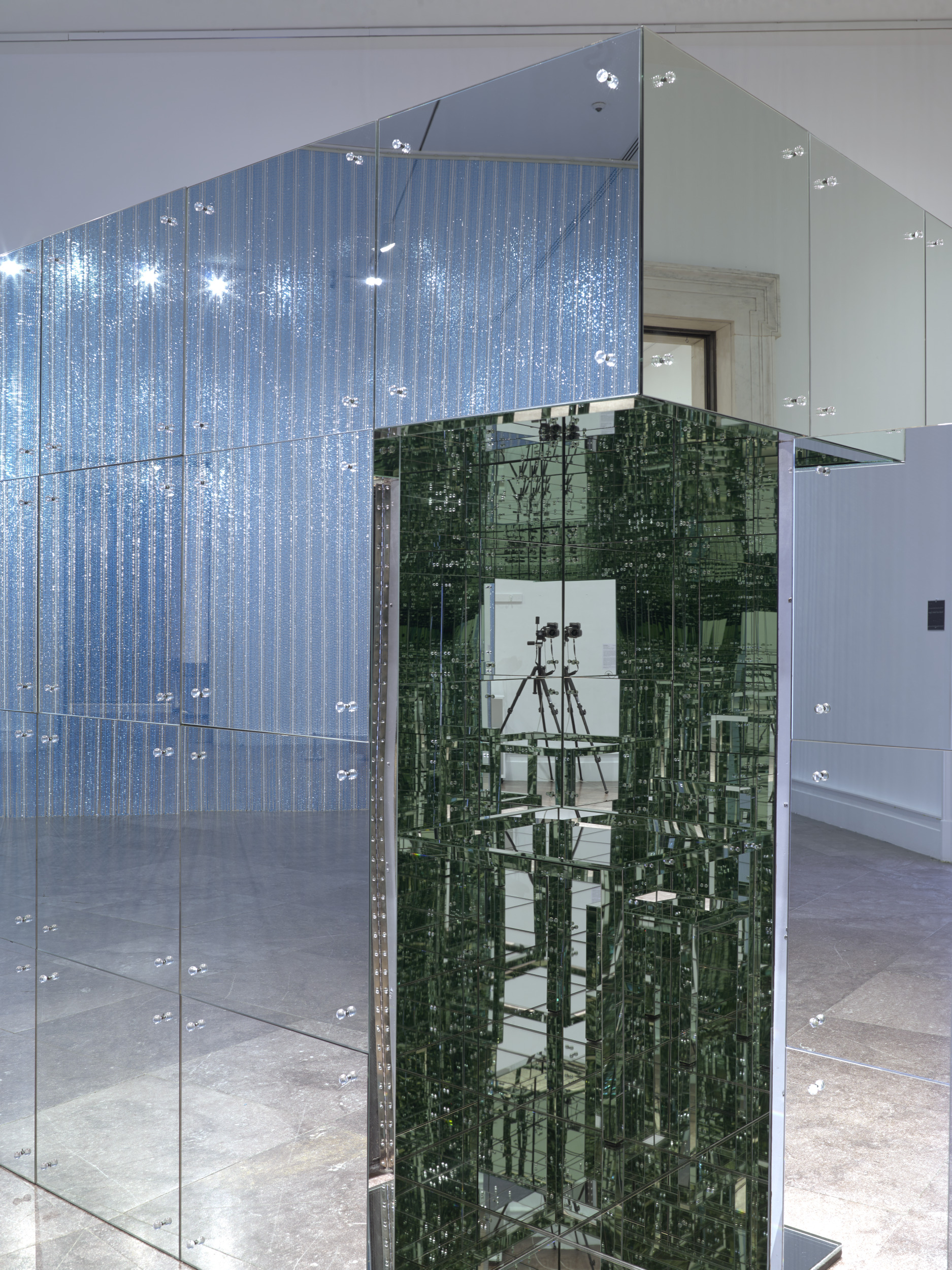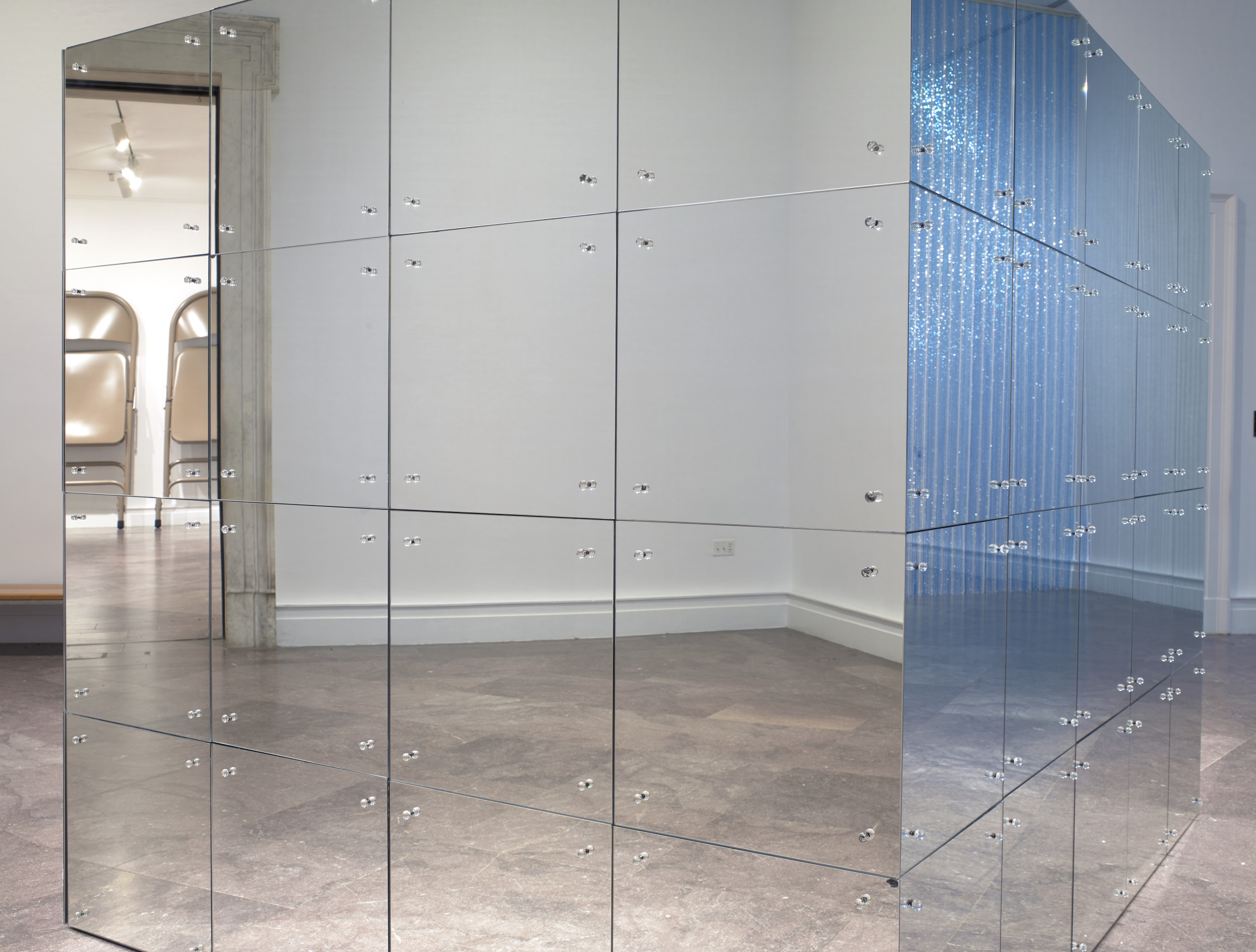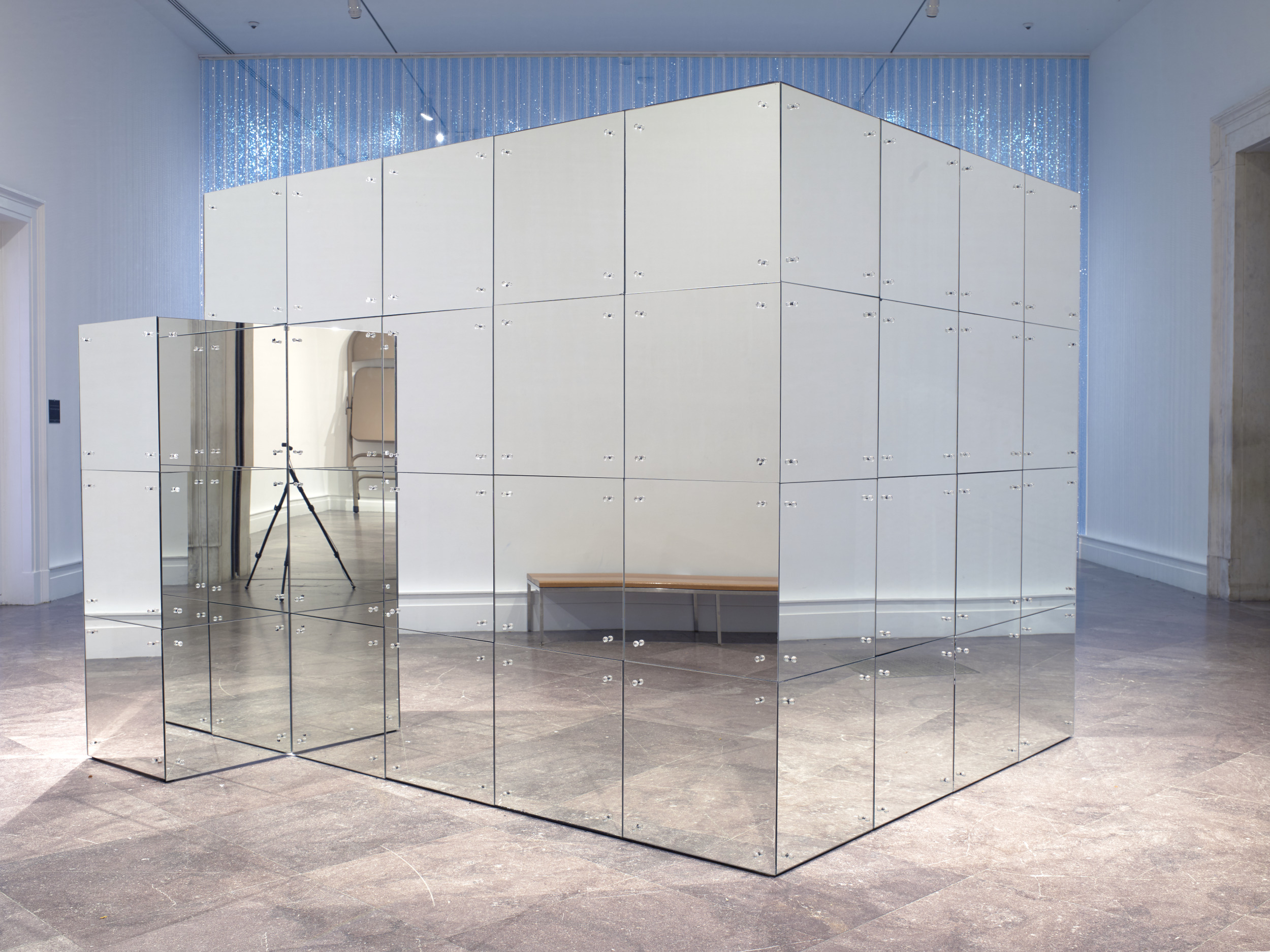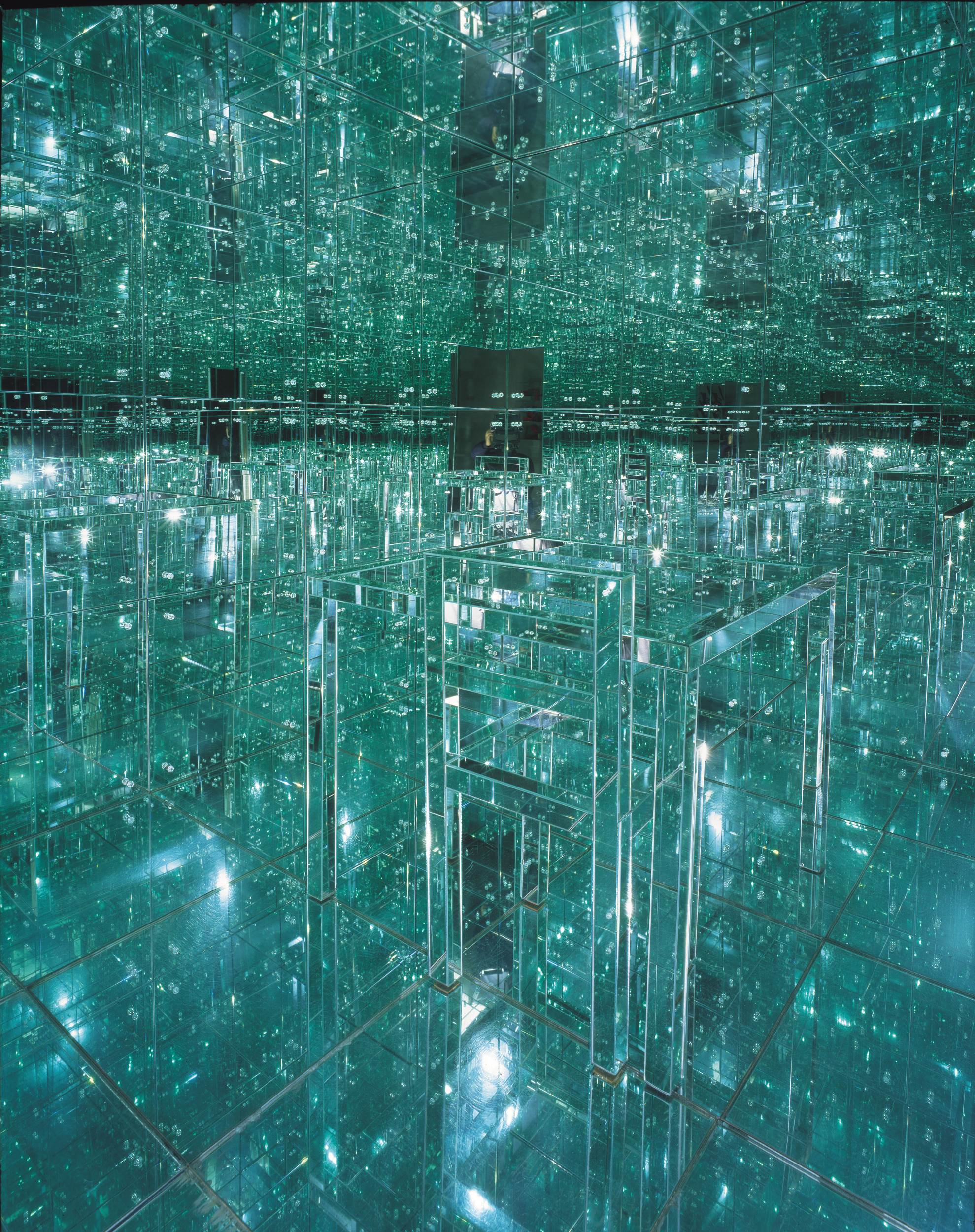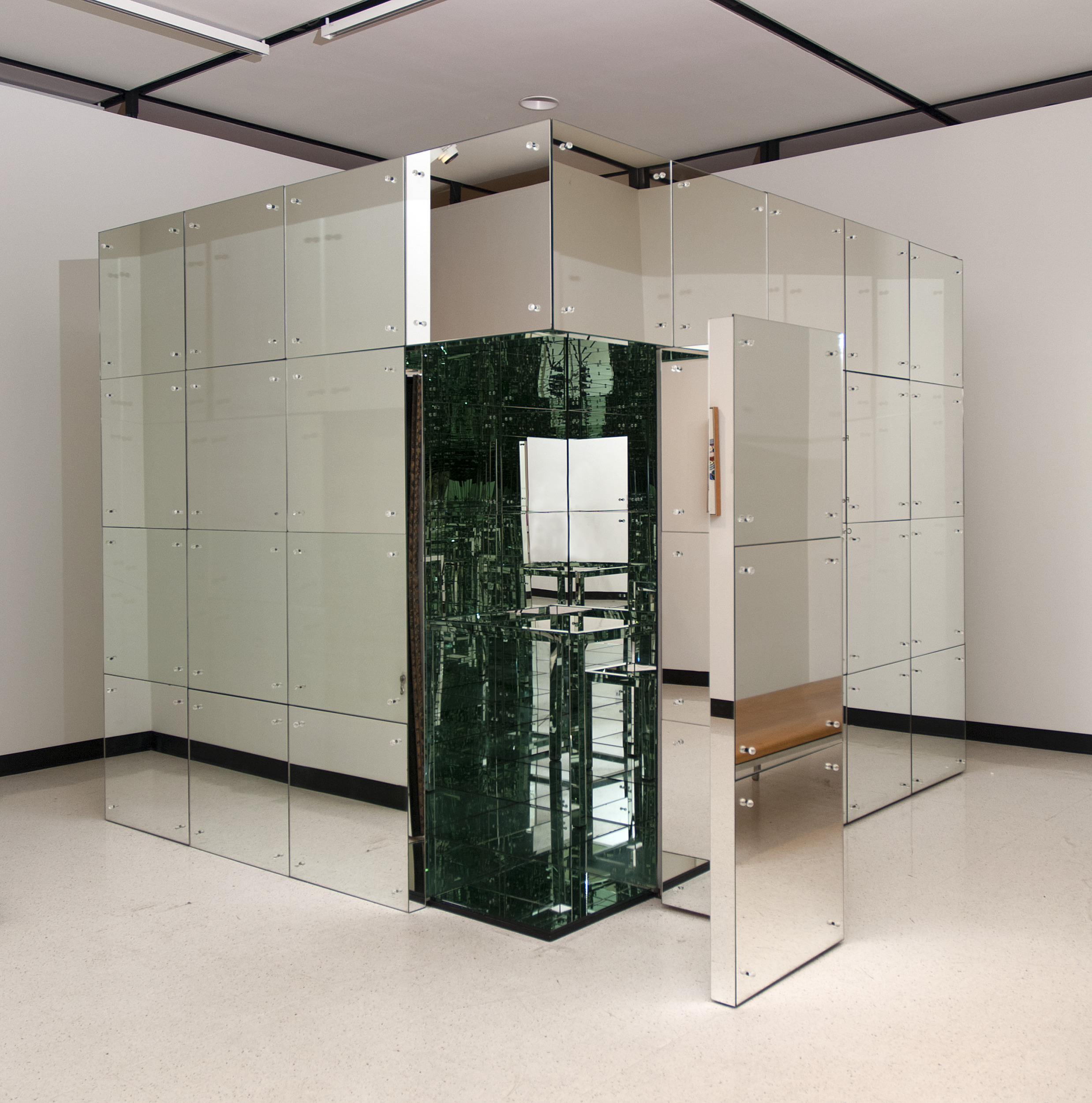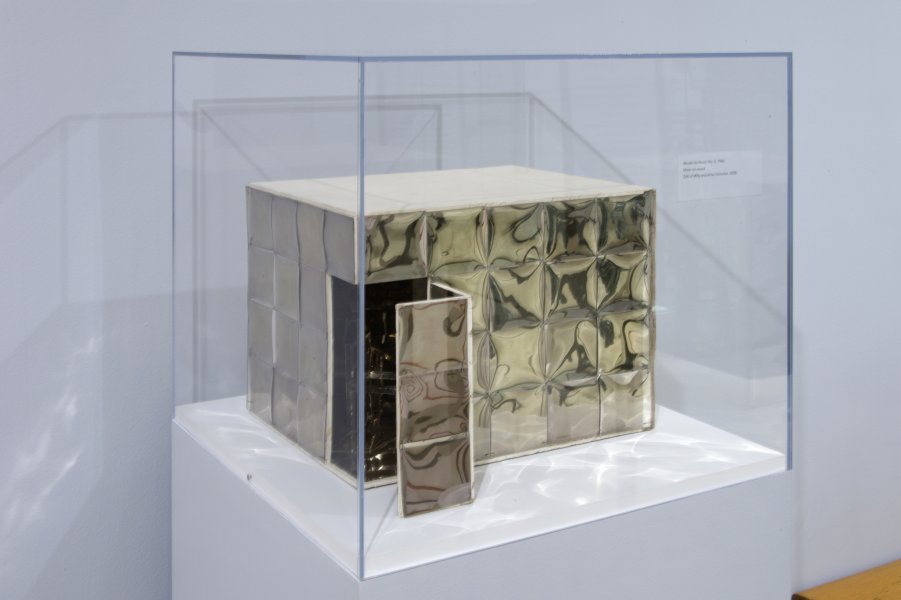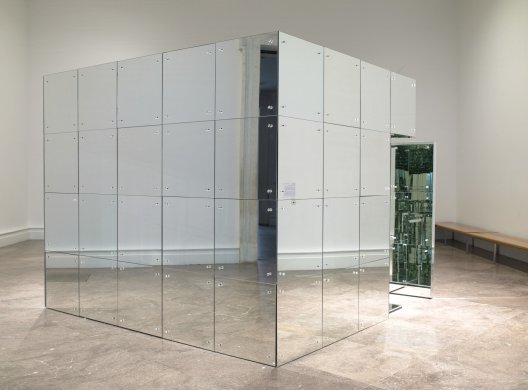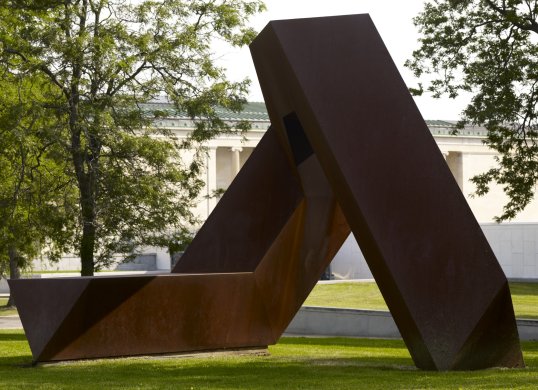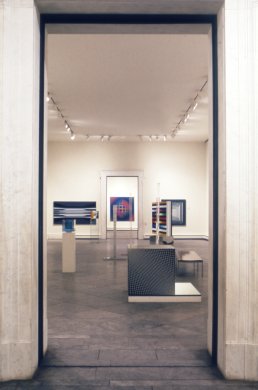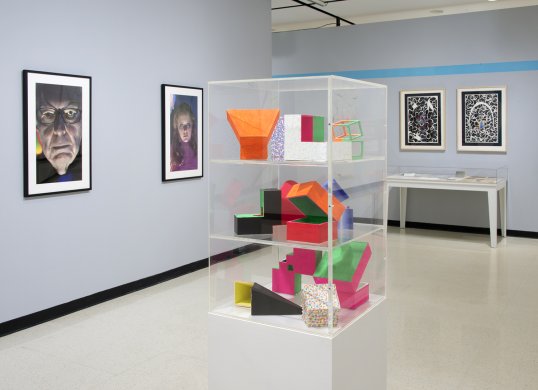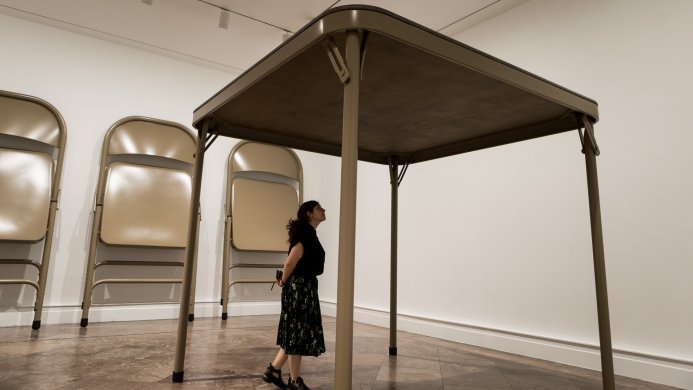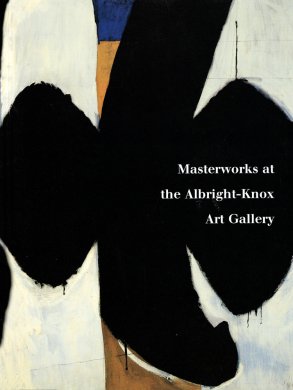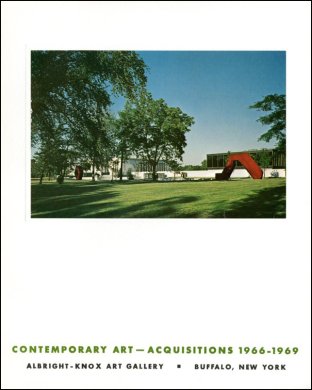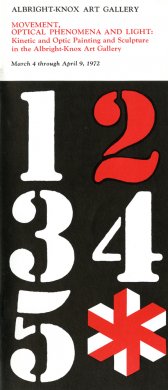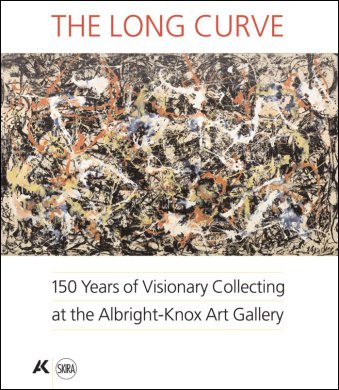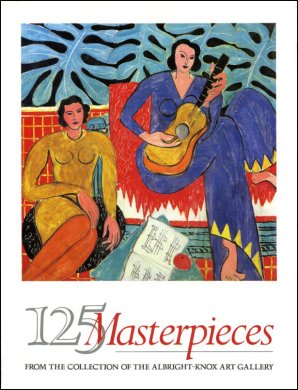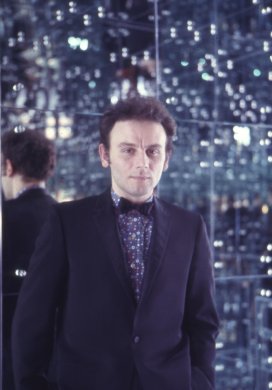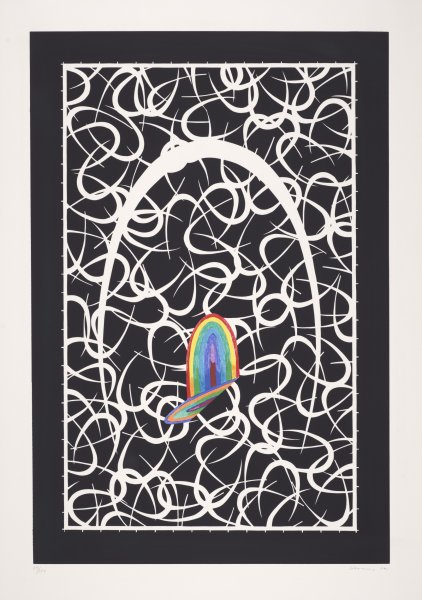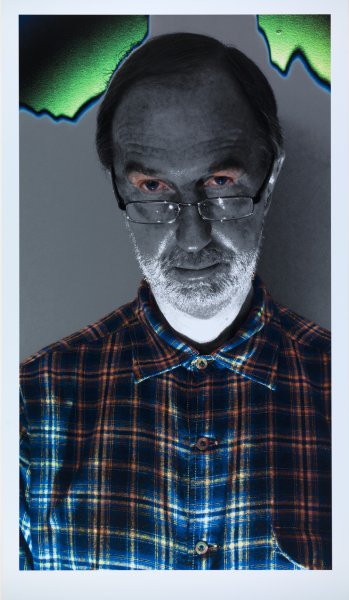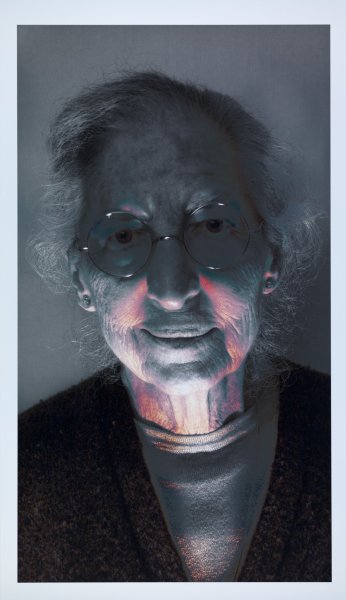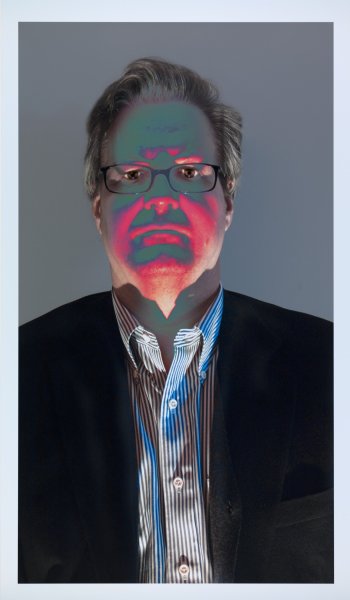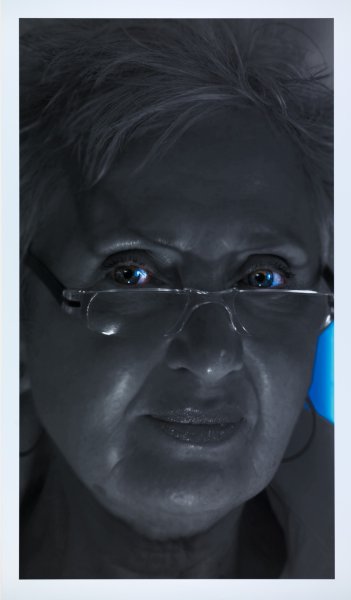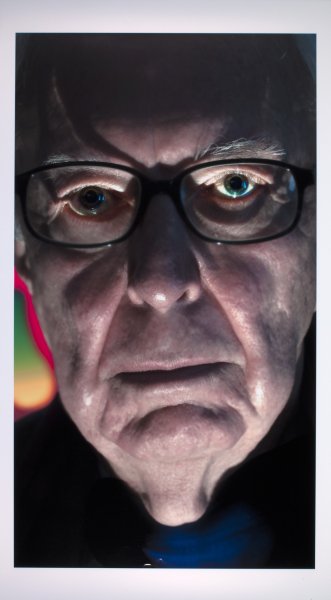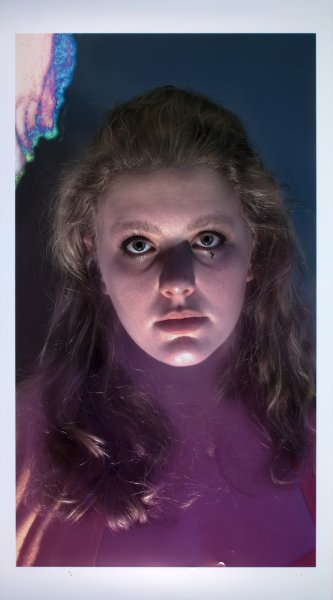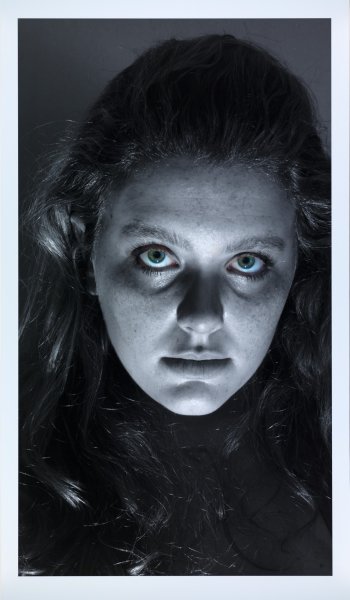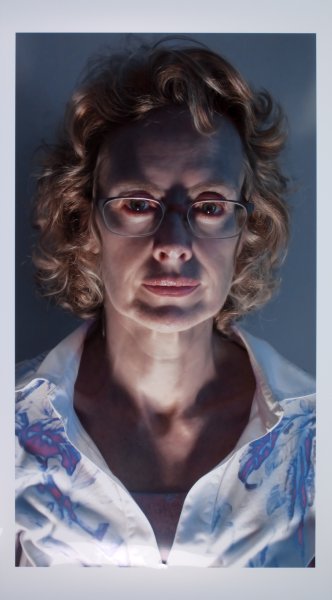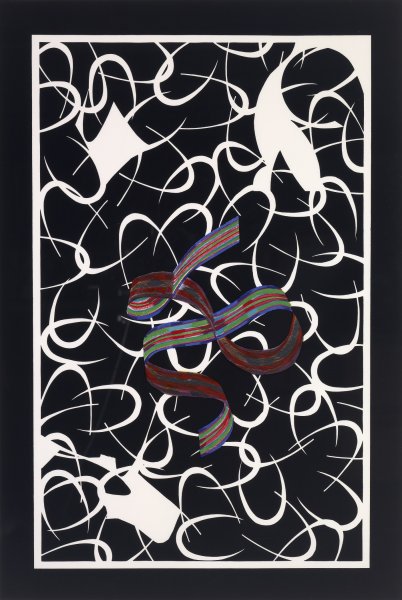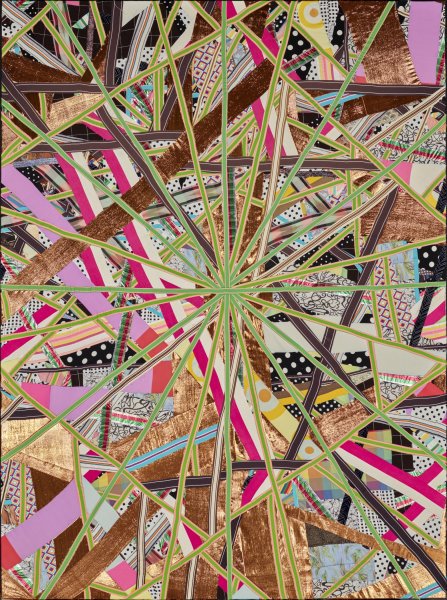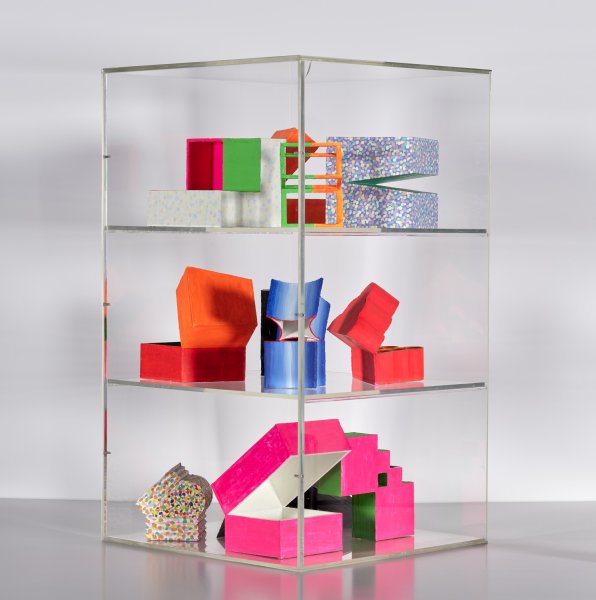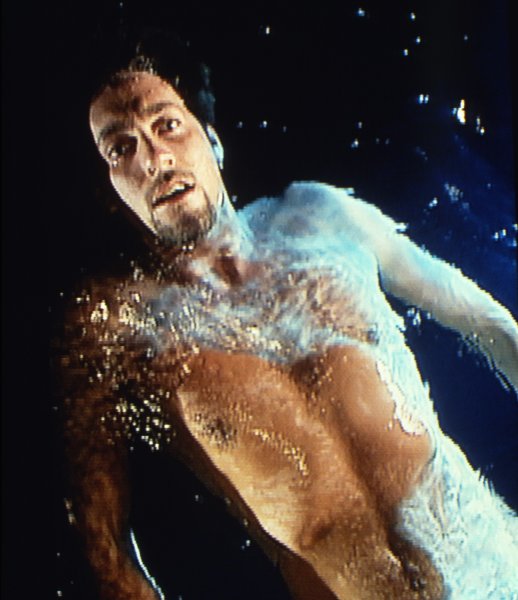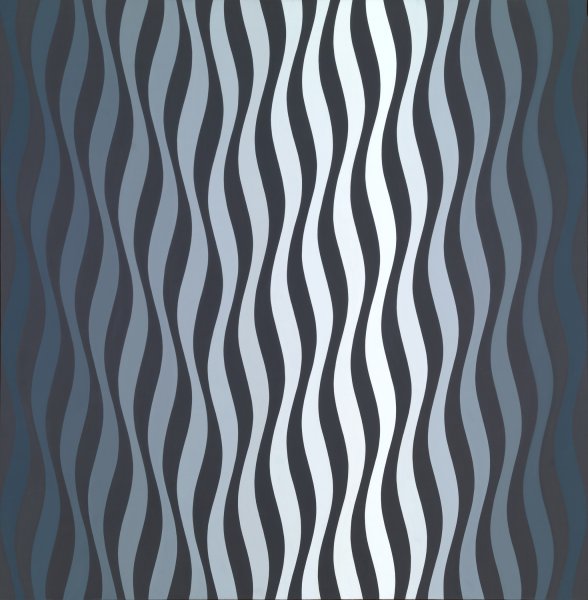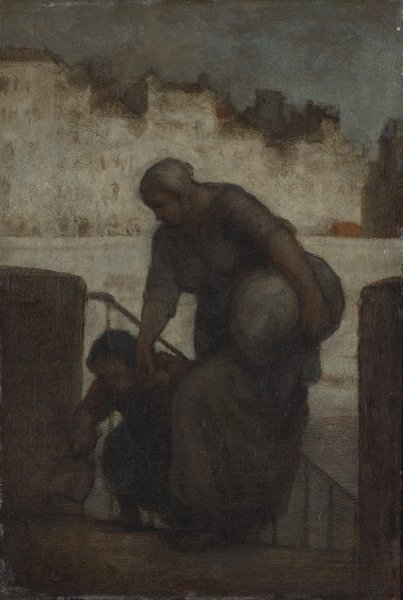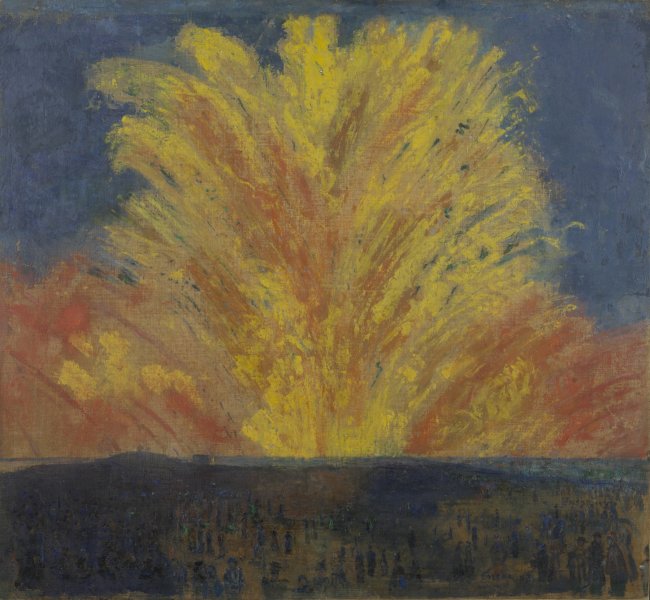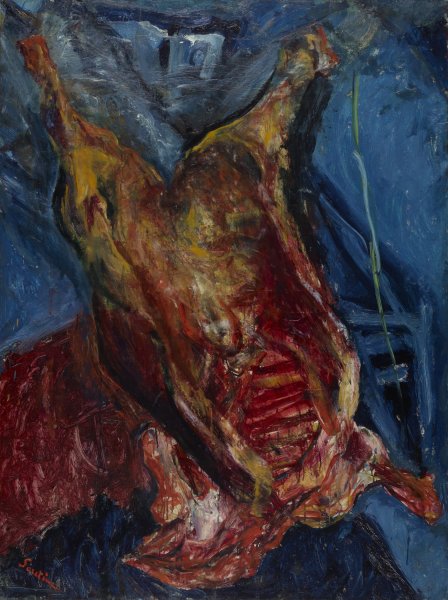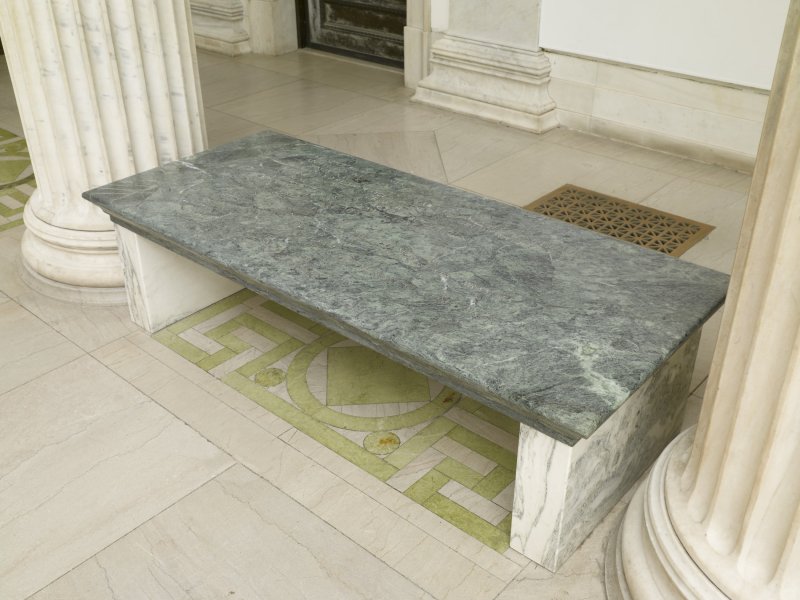Lucas Samaras
American, born Greece, 1936-2024
Mirrored Room, 1966
Artwork Details
Collection Highlight
Materials
mirror on wood
Measurements
overall: 96 x 96 x 120 inches (243.84 x 243.84 x 304.8 cm)
Collection Buffalo AKG Art Museum
Credit
Gift of Seymour H. Knox, Jr., 1966
Accession ID
K1966:15
One of the most beloved works of art in the collection of the Albright-Knox, Lucas Samaras’s Mirrored Room was designed for the viewer to experience from the inside. Before its creation, Samaras had become well known for a series of small sculptures encrusted with materials atypical in 1960s art, such as yarn, bones, pins, fake hair, pencils, razor blades, and taxidermy birds. These mysterious boxes referred to the human body and also contained autobiographical elements, in the manner of reliquaries. The Mirrored Room represented a departure from these fetish boxes, to a room-sized cube that contained little except a mirrored table and chair.
The idea for the Mirrored Room came to Samaras as early as 1963, when he was writing a short story entitled “Killman.” His title character lived in a mirrored house surrounded by endless reflections and repetitions of himself. As Samaras described it, “On one wall was a . . . box which upon opening revealed jeweled parts of a man, a mirror inside, mirror outside box, and an x-ray machine.”
In the Mirrored Room, Samaras created a space in which the only images are “drawn” by the reflections of visitors. He later wrote that with this work he was engaging with the entire history of mirrors, from their appearance in fairy tales to fun houses. He felt the end result created “a space, an environment, a fantasy, a world of artificiality, a complicated panorama.” He continued: “Being imbedded in this huge crystalline structure that has no top, bottom, or sides, this feeling of suspension, this feeling of polite claustrophobia or acrophobia, this feeling of fakery or loneliness seems complex, associatively enveloping and valid to me as a work of art, wonder, sensuality, pessimistic theory, and partial invisibility.”
Label from Lucas Samaras: Reflections, June 21, 2014–January 4, 2015
